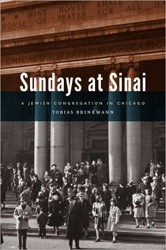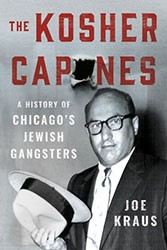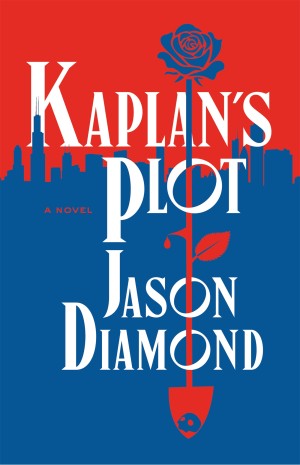The intersection of Maxwell Street and Halsted Street in Chicago once formed the hub of a teeming area known for its outdoor market of pushcarts and stands, as well as more permanent stores selling everything from clothing to pickles. This neighborhood provided a residential and commercial launching point for generations of immigrants, most notably Jews in the years from 1900 through the 1970’s.
Today, the flea market has been relocated a half-mile to the south, and the real estate has been paved over to provide an expanded campus for the University of Illinois at Chicago and a new, gentrified residential area known as University Village. Visit the intersection of Halsted and Maxwell today and you will find a Jamba Juice outlet on one corner and a Caribou Coffee shop on another. Although a few building facades are being preserved in a nod to the past, Maxwell Street is effectively gone for good.
The current book by Shuli Eshel and Roger Schatz is derived from a documentary film, and its derivative nature shows. The book’s main value rests in its plethora of photographs. The text provides 38 brief vignettes, based on interviews, of a variety of Maxwell Street denizens. While it evokes some of the bustling (and hustling) vitality that was Maxwell Street, it leaves the reader wanting more. A successful portrait of a bygone era depends on a profusion of detail, and here the details are clouded in the process of recollection. Some stand out, but many more need to be filled in to make the neighborhood come alive. The book’s brief glance at the tactics used by ‘pullers’ to maneuver shoppers into stores makes us want to read a good novel about one such entrepreneur. The brief sketch of the life of Abraham Lincoln Marovitz, who rose from the slums of Maxwell Street to become a federal judge and one of Chicago’s most revered citizens, makes us yearn for a full-length biography.
Additional Review by Leonard A. Matanky
Just as the Lower East Side of Manhattan defined the Jewish immigrant experience of New York City, Maxwell Street and its pushcarts and bazaars defined the late-19th and early 20th century Chicago Jewish immigrant experience. Maxwell Street was the place where Benny Goodman formed his first band, and where Jewish entrepreneurs sold their first merchandise.
This slim volume, a companion to the half-hour documentary “Maxwell Street: A Living Memory, The Jewish Experience in Chicago,” expands upon many of the interviews in that film and adds a few more stories as well. Each story weaves both first-person testimonies along with additional background information.
The nine chapters of this book include 40 reminiscences of the way it was on Maxwell Street, from “First You Survive” to “Aim Low” and ending with an “Ode to Maxwell Street.”
Today, Maxwell Street is no more, replaced with luxury condominiums and parts of the University of Illinois campus. But reading Jewish Maxwell Street Stories brings some of the vibrancy and excitement of that time back to life.




